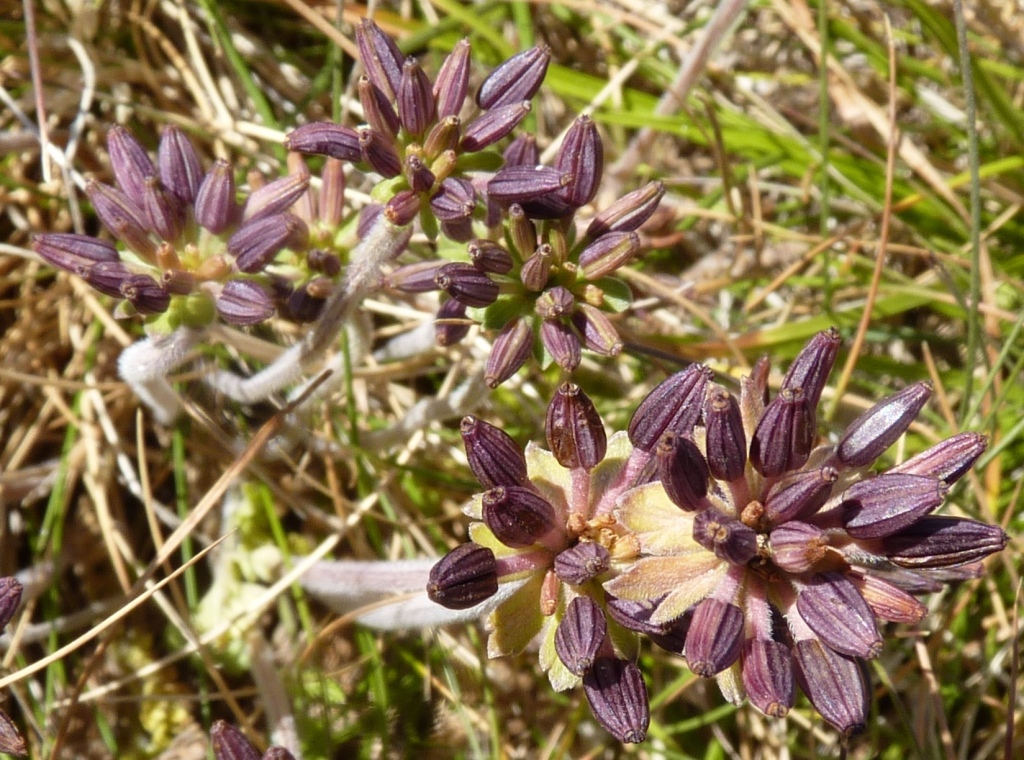Oreomyrrhis eriopoda
(DC.) Hook.f. Australian CarawayRosetted perennial to 50 cm high; rootstock a slender to stout taproot; stem occasionally branched on older, vigorous plants. Leaves pinnate, lamina oblong in outline, 1.5–9.0 cm long, 0.5–8 cm wide; leaflets 15–25, oblong, abruptly acute, glabrescent to hairy, the lower leaflets often remote, petiolule and rachis hairy; petiole 1.5–20 cm long, covered in short white hairs; leaf-sheath ciliate to hairy. Scape erect, with fine white retrorse hairs, to 40 cm long (usually much longer than leaves) in fruit; umbels mainly 15–35-flowered; involucral bracts 8–12, ovate to lanceolate, 3–6 mm long, hairy on the outside and along the margins, often villous at base, occasionally shallowly toothed, apex acute to obtuse. Petals white or tinged pink, with dark midvein, glabrous or hirsute on outside, 0.7–1 mm long. Fruit 15–35 per umbel on hirsute pedicels, ovate to oblanceolate, 3–6 mm long, dark brown, glabrous, with 5 rounded light brown to yellow-green ribs. Flowers late spring–summer.
Wim, GleP, VVP, VRiv, OtP, Gold, CVU, GGr, DunT, NIS, EGL, EGU, HSF, HNF, Strz, MonT, HFE, VAlp. Also SA, NSW, Tas. In Victoria occurring mainly in elevated areas of the east with isolated western populations in the Grampians and near Port Campbell. Typically occurring in alpine and subalpine grassland, open heath and woodland communities, but occasionally entering forest and heath at lower elevations (e.g. Mt Dandenong, Macedon and Kinglake areas).
Jobson, P.K. (1999). Oreomyrrhis. In: Walsh, N.G.; Entwisle, T.J., Flora of Victoria Vol. 4, Cornaceae to Asteraceae, pp. 269–272. Inkata Press, Melbourne.
 Spinning
Spinning

